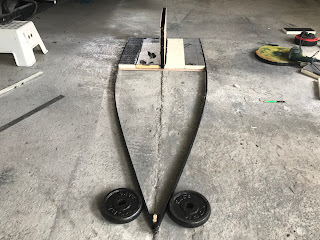Wednesday, May 28, 2025
Day Boat #15
Day Boat #14
Monday, May 26, 2025
Day Boat #13
Day Boat #12
Day Boat #11
Day Boat #10
Day Boat #9
Day Boat #8
Day Boat #7
Day Boat #6
Day Boat #5
Day Boat #4
Day Boat #3
Day Boat #2
Day Boat #1
Sunday, May 25, 2025
Missing a Trick?
The latest build being a work in progress, I pause to kick it around in order to compare and contrast it with the plywood build which still features at www.teledrone.com. The gut feeling is that the first remains the better structural build, though while reviewing the templates I note an oversight, which in the event means I can replace the original pair of alternative patterns with the above... which suits all purposes. Sometimes you need to step backwards in order to go forward.
Pin Number
Saturday, May 24, 2025
Lateral Thinking
Wickesipedia
Wicked Wickes of the North
Thursday, May 22, 2025
Sea Change?
Tuesday, May 20, 2025
Wood Working
Monday, May 19, 2025
Not so SS-UAVe.
Sunday, May 18, 2025
Wood Works
Thursday, May 15, 2025
POC #36
POC #35
Tuesday, May 13, 2025
POC Flotation Test #2
Sunday, May 11, 2025
POC #34 (retrofit)
POC Flotation Test #1
No excuse really on a day like this not to don waders and get back to the pond, where more debris has been tipped by the locals in an effort to deter youths from carrying out static flotation tests: but I've suffered for my art, and now it's your turn.
Pleasingly the craft floats level, with its motor kissing the waterline... with a few lilies, Monet would have been happy painting this one.
Situation improved by rear-loading the deck with a 2.50 kilo battery-pack that is good for around twenty minutes, the craft looking like it's champing at the bit.
What I have to do now is replace the diagonal (forward-biased) foam in the keel with a rectangular panel that I hope will make little difference here, yet make building easier and reinforce the end result.
Spoiler alert: experience suggests that unladen this will raise the deck clear of the water but settled on one side ~ and look a bit shit ~ tho' I figure with the battery-pack added normal service will be resumed. Don't worry about liquid ingress to the motor, incidentally, as these things run submerged.
The boat weighs 9.50 pounds without the battery and with its C of G six inches aft of datum (the forward edge of the deck.) As the motor produces the same thrust it may be among the few naval aircraft able to accelerate vertically, or at least in theory.
Nice if it works.
POC #33
Wood Work
"MENZ two-blade propellers upto 20" diameter have an 8mm drilled hub, those with a diameter of more than 20″ have a 10mm drilled hub."
And armed with such guidance we can now move on with a choice of wooden propeller (though I recommend not telling people your having a MENZ).

















































